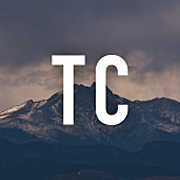Navigating the Wildfire Landscape: Preparedness and Recovery
May 10, 2025, 4:16 am
Wildfires are a looming threat, especially in regions like Boulder County, Colorado. They are not just natural disasters; they are life-altering events. The smoke clears, but the scars remain. As communities grapple with the aftermath, understanding how to prepare and recover is essential.
Every May, Wildfire Awareness Month serves as a reminder. It’s a call to action. It urges homeowners to take stock of their lives and their properties. What would you save if you had mere minutes to flee? This question isn’t just hypothetical; it’s a reality for many. The Marshall Fire left a mark on Boulder County, transforming lives and landscapes. Now, nearly everyone knows someone affected by wildfire.
Insurance is another critical piece of the puzzle. Many homeowners skim through their hazard insurance policies, unaware of the gaps. After the Marshall Fire, countless individuals discovered they were underinsured. Knowing what your policy covers is vital. Will it help you rebuild? What about temporary housing? These questions need answers before disaster strikes.
One proactive step is creating an inventory of your belongings. Document everything with photos or videos. Store this information securely, off-site or in the cloud. If disaster strikes, you’ll have a record of what you lost.
Annual reviews with your insurance agent are essential. Discuss coverage updates and be aware of property inspections. Insurers will assess your defensible space—the buffer zone around your home designed to mitigate fire risk.
1.Immediate Zone (0–5 feet from the house):
Every May, Wildfire Awareness Month serves as a reminder. It’s a call to action. It urges homeowners to take stock of their lives and their properties. What would you save if you had mere minutes to flee? This question isn’t just hypothetical; it’s a reality for many. The Marshall Fire left a mark on Boulder County, transforming lives and landscapes. Now, nearly everyone knows someone affected by wildfire.
Preparation is Key
In the face of such threats, preparation is not optional; it’s a necessity. Wildfire Partners, a local initiative, offers guidance to homeowners. They provide tailored advice on reducing wildfire risks. Completing their recommended steps earns you a certificate. It’s a badge of honor in a fire-prone area.Insurance is another critical piece of the puzzle. Many homeowners skim through their hazard insurance policies, unaware of the gaps. After the Marshall Fire, countless individuals discovered they were underinsured. Knowing what your policy covers is vital. Will it help you rebuild? What about temporary housing? These questions need answers before disaster strikes.
One proactive step is creating an inventory of your belongings. Document everything with photos or videos. Store this information securely, off-site or in the cloud. If disaster strikes, you’ll have a record of what you lost.
Annual reviews with your insurance agent are essential. Discuss coverage updates and be aware of property inspections. Insurers will assess your defensible space—the buffer zone around your home designed to mitigate fire risk.
Creating Defensible Space
Defensible space is your first line of defense. It’s about removing fuel—anything that can ignite. Think of your property in three zones:1.
Immediate Zone (0–5 feet from the house): This area must be flammable-free. No woodpiles, dry leaves, or combustible mulch. It’s a no-fly zone for fire.
2. Intermediate Zone (5–30 feet from the house): Create fire breaks with lawns, patios, and driveways. Trees should be spaced out, canopies kept at a distance. This zone is about creating barriers.
3. Extended Zone (30–60 feet and beyond): Continue thinning trees and vegetation. Space trees at least 12 feet apart. On steep slopes, widen the gaps. Fire spreads faster uphill; your defenses must account for that.
If your home has an old shake roof, it’s time for an upgrade. Fire-retardant roofs are essential. They can be the difference between a home standing or falling to flames.
Evacuation Plans
When the call for evacuation comes, time is of the essence. Have a plan ready. Know what to take. If you have five minutes, what’s on your list? Family photos often top the list. In today’s digital age, upload them to the cloud. Even old prints can be scanned and saved online.
Important documents shouldn’t just sit in a home safe. Consider a safe deposit box or digital copies stored securely.
Your evacuation plan should include primary and backup escape routes. Designate a meeting spot for family members. When chaos strikes, clarity is your ally.
The Real Estate Impact
Wildfires don’t just affect homes; they shake the real estate market. Smoke clouds the air, and buyers vanish. Insurance becomes scarce, and transactions stall. Recovery is slow, especially in heavily forested areas. It can take years for the land—and the market—to bounce back.
Conversely, regions hit by grassland fires often recover quickly. A single good growing season can rejuvenate the landscape. By the next summer, the scars may fade, and life resumes.
Looking Ahead
As we navigate this wildfire landscape, resources abound. Books like Linda Masterson’s *Surviving Wildfire* offer invaluable insights. Masterson, a survivor herself, shares wisdom on preparation and recovery.
In the face of wildfires, knowledge is power. Understanding risks, preparing your home, and having a solid plan can make all the difference.
Wildfires are unpredictable, but your response doesn’t have to be. Equip yourself with the tools and knowledge to face the flames. The landscape may change, but resilience can prevail.
In the end, it’s about more than just homes; it’s about lives. Prepare, protect, and persevere. The fire may come, but with the right steps, you can stand strong in its wake.
2.
Intermediate Zone (5–30 feet from the house): Create fire breaks with lawns, patios, and driveways. Trees should be spaced out, canopies kept at a distance. This zone is about creating barriers.
3. Extended Zone (30–60 feet and beyond): Continue thinning trees and vegetation. Space trees at least 12 feet apart. On steep slopes, widen the gaps. Fire spreads faster uphill; your defenses must account for that.
If your home has an old shake roof, it’s time for an upgrade. Fire-retardant roofs are essential. They can be the difference between a home standing or falling to flames.
Evacuation Plans
When the call for evacuation comes, time is of the essence. Have a plan ready. Know what to take. If you have five minutes, what’s on your list? Family photos often top the list. In today’s digital age, upload them to the cloud. Even old prints can be scanned and saved online.
Important documents shouldn’t just sit in a home safe. Consider a safe deposit box or digital copies stored securely.
Your evacuation plan should include primary and backup escape routes. Designate a meeting spot for family members. When chaos strikes, clarity is your ally.
The Real Estate Impact
Wildfires don’t just affect homes; they shake the real estate market. Smoke clouds the air, and buyers vanish. Insurance becomes scarce, and transactions stall. Recovery is slow, especially in heavily forested areas. It can take years for the land—and the market—to bounce back.
Conversely, regions hit by grassland fires often recover quickly. A single good growing season can rejuvenate the landscape. By the next summer, the scars may fade, and life resumes.
Looking Ahead
As we navigate this wildfire landscape, resources abound. Books like Linda Masterson’s *Surviving Wildfire* offer invaluable insights. Masterson, a survivor herself, shares wisdom on preparation and recovery.
In the face of wildfires, knowledge is power. Understanding risks, preparing your home, and having a solid plan can make all the difference.
Wildfires are unpredictable, but your response doesn’t have to be. Equip yourself with the tools and knowledge to face the flames. The landscape may change, but resilience can prevail.
In the end, it’s about more than just homes; it’s about lives. Prepare, protect, and persevere. The fire may come, but with the right steps, you can stand strong in its wake.
3.
Extended Zone (30–60 feet and beyond): Continue thinning trees and vegetation. Space trees at least 12 feet apart. On steep slopes, widen the gaps. Fire spreads faster uphill; your defenses must account for that.
If your home has an old shake roof, it’s time for an upgrade. Fire-retardant roofs are essential. They can be the difference between a home standing or falling to flames.
Evacuation Plans
When the call for evacuation comes, time is of the essence. Have a plan ready. Know what to take. If you have five minutes, what’s on your list? Family photos often top the list. In today’s digital age, upload them to the cloud. Even old prints can be scanned and saved online.
Important documents shouldn’t just sit in a home safe. Consider a safe deposit box or digital copies stored securely.
Your evacuation plan should include primary and backup escape routes. Designate a meeting spot for family members. When chaos strikes, clarity is your ally.
The Real Estate Impact
Wildfires don’t just affect homes; they shake the real estate market. Smoke clouds the air, and buyers vanish. Insurance becomes scarce, and transactions stall. Recovery is slow, especially in heavily forested areas. It can take years for the land—and the market—to bounce back.
Conversely, regions hit by grassland fires often recover quickly. A single good growing season can rejuvenate the landscape. By the next summer, the scars may fade, and life resumes.
Looking Ahead
As we navigate this wildfire landscape, resources abound. Books like Linda Masterson’s *Surviving Wildfire* offer invaluable insights. Masterson, a survivor herself, shares wisdom on preparation and recovery.
In the face of wildfires, knowledge is power. Understanding risks, preparing your home, and having a solid plan can make all the difference.
Wildfires are unpredictable, but your response doesn’t have to be. Equip yourself with the tools and knowledge to face the flames. The landscape may change, but resilience can prevail.
In the end, it’s about more than just homes; it’s about lives. Prepare, protect, and persevere. The fire may come, but with the right steps, you can stand strong in its wake.
If your home has an old shake roof, it’s time for an upgrade. Fire-retardant roofs are essential. They can be the difference between a home standing or falling to flames.
Evacuation Plans
When the call for evacuation comes, time is of the essence. Have a plan ready. Know what to take. If you have five minutes, what’s on your list? Family photos often top the list. In today’s digital age, upload them to the cloud. Even old prints can be scanned and saved online.Important documents shouldn’t just sit in a home safe. Consider a safe deposit box or digital copies stored securely.
Your evacuation plan should include primary and backup escape routes. Designate a meeting spot for family members. When chaos strikes, clarity is your ally.
The Real Estate Impact
Wildfires don’t just affect homes; they shake the real estate market. Smoke clouds the air, and buyers vanish. Insurance becomes scarce, and transactions stall. Recovery is slow, especially in heavily forested areas. It can take years for the land—and the market—to bounce back.Conversely, regions hit by grassland fires often recover quickly. A single good growing season can rejuvenate the landscape. By the next summer, the scars may fade, and life resumes.
Looking Ahead
As we navigate this wildfire landscape, resources abound. Books like Linda Masterson’s *Surviving Wildfire* offer invaluable insights. Masterson, a survivor herself, shares wisdom on preparation and recovery.In the face of wildfires, knowledge is power. Understanding risks, preparing your home, and having a solid plan can make all the difference.
Wildfires are unpredictable, but your response doesn’t have to be. Equip yourself with the tools and knowledge to face the flames. The landscape may change, but resilience can prevail.
In the end, it’s about more than just homes; it’s about lives. Prepare, protect, and persevere. The fire may come, but with the right steps, you can stand strong in its wake.


